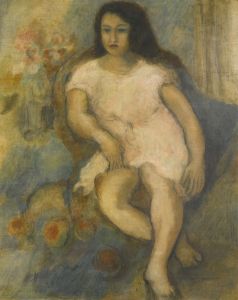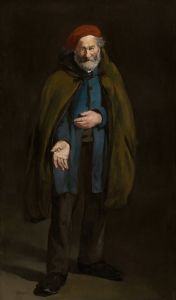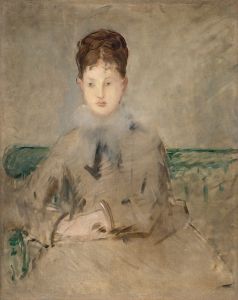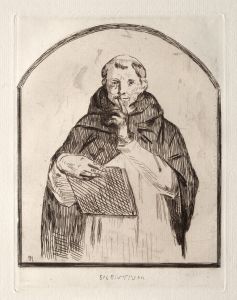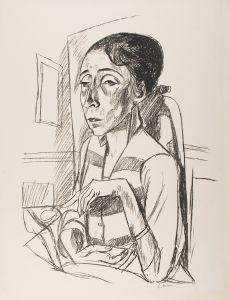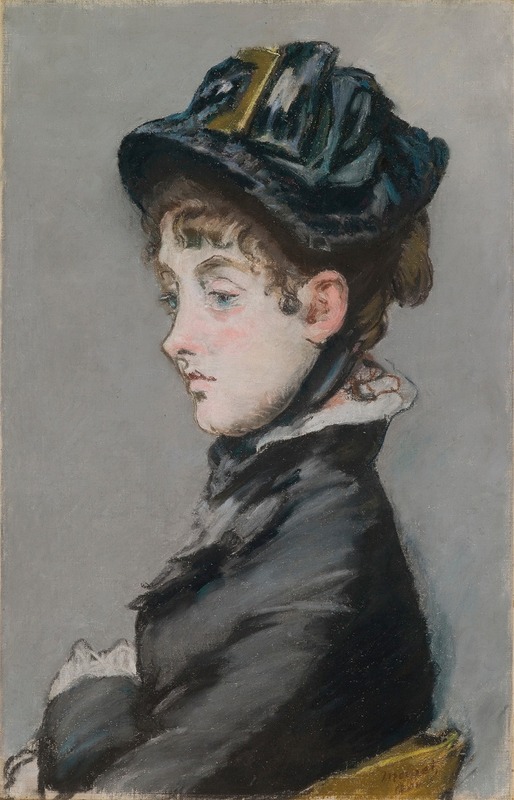
Madame Guillemet
A hand-painted replica of Édouard Manet’s masterpiece Madame Guillemet, meticulously crafted by professional artists to capture the true essence of the original. Each piece is created with museum-quality canvas and rare mineral pigments, carefully painted by experienced artists with delicate brushstrokes and rich, layered colors to perfectly recreate the texture of the original artwork. Unlike machine-printed reproductions, this hand-painted version brings the painting to life, infused with the artist’s emotions and skill in every stroke. Whether for personal collection or home decoration, it instantly elevates the artistic atmosphere of any space.
Édouard Manet, a pivotal figure in the transition from Realism to Impressionism, painted "Madame Guillemet" in 1880. This artwork is a portrait of Madame Isabelle Guillemet, the wife of Manet's friend and fellow artist, Paul Guillemet. The painting is also known by the title "Portrait of Madame Guillemet" and is one of the many portraits Manet created during his career, showcasing his skill in capturing the essence and character of his subjects.
Manet's approach to portraiture was innovative for his time, as he often combined traditional techniques with modern sensibilities. In "Madame Guillemet," Manet employs a realistic style, yet the composition and use of color reflect the burgeoning Impressionist movement. The painting is characterized by its attention to detail, particularly in the depiction of Madame Guillemet's attire and the subtle play of light and shadow on her face and surroundings.
The portrait features Madame Guillemet seated, with a composed and serene expression. Manet's use of a dark background serves to highlight the subject, drawing the viewer's attention to her face and the intricate details of her clothing. The choice of colors is both restrained and sophisticated, with a palette that includes deep blacks, soft whites, and muted earth tones. This color scheme not only emphasizes the elegance of Madame Guillemet's attire but also reflects the artist's mastery of tonal variation.
Manet's portraits are often noted for their psychological depth, and "Madame Guillemet" is no exception. The painting captures not just the physical likeness of the subject but also conveys a sense of her personality and social status. Madame Guillemet's poised demeanor and the luxurious details of her dress suggest a woman of confidence and refinement, indicative of her position in society.
Throughout his career, Manet was known for his ability to blend elements of realism with a modern approach to painting. His portraits, including "Madame Guillemet," often challenged traditional conventions by presenting subjects in a candid and unidealized manner. This approach was part of what made Manet a controversial figure in the art world of his time, as he frequently pushed the boundaries of accepted artistic norms.
"Madame Guillemet" is housed in the Musée d'Orsay in Paris, where it remains an important example of Manet's portraiture. The painting is appreciated not only for its aesthetic qualities but also for its historical significance, as it represents a key moment in the evolution of modern art. Manet's work, including this portrait, continues to be studied and admired for its innovative approach and its influence on subsequent generations of artists.
In summary, "Madame Guillemet" by Édouard Manet is a significant work that exemplifies the artist's skill in portraiture and his role in the development of modern art. The painting's combination of realistic detail and modern composition reflects Manet's unique artistic vision and his contribution to the art world of the 19th century.





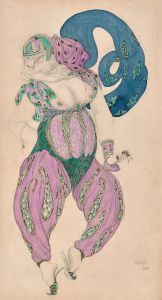



![Graphic designs for Fortune magazine.] [Study for cover with telephone lines spanning the globe](/imgs/249256/s/winold-reiss-graphic-designs-for-fortune-magazine-study-for-cover-with-telephone-lines-spanning-the-globe-766a580f.jpg)
